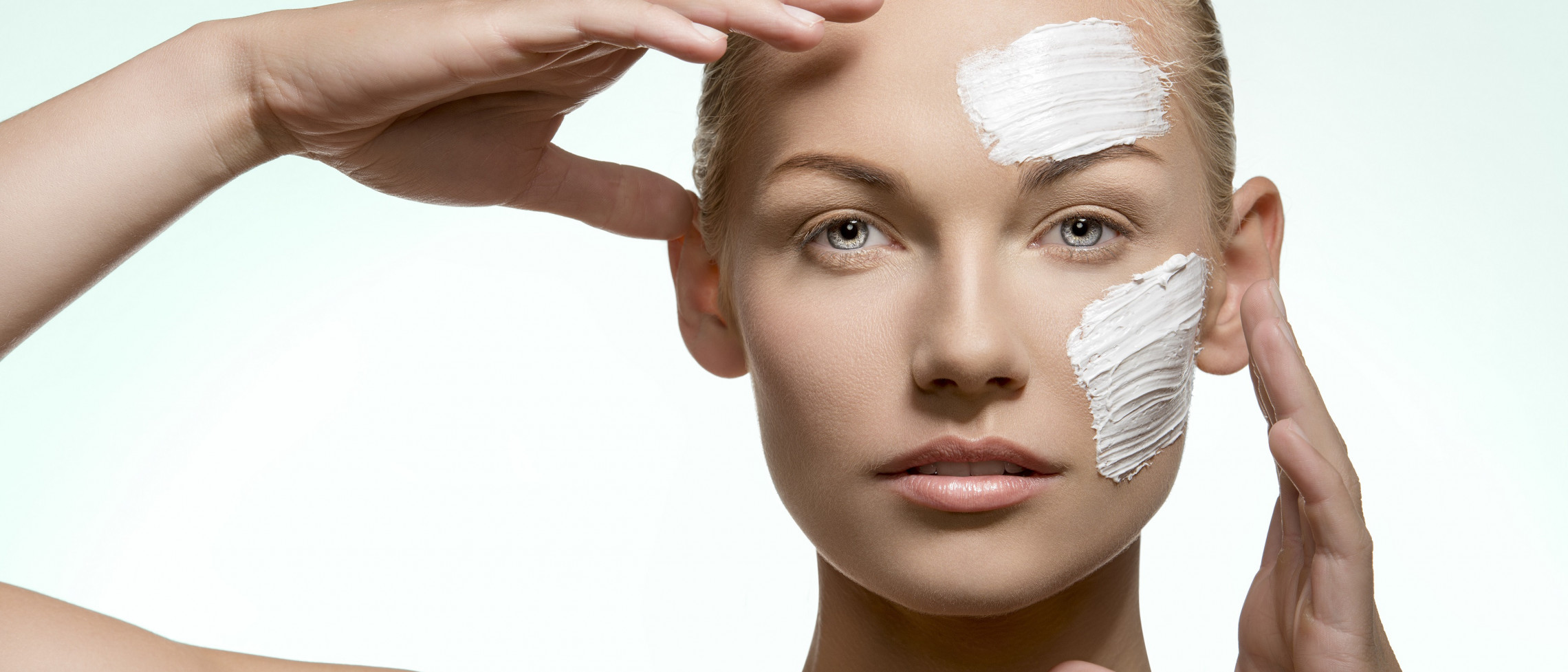
The growth in aesthetics
The trend today is away from traditional cosmetic surgery and toward less expensive minimally invasive procedures.The use of cosmetic procedures to reduce the signs of ageing has increased dramatically over the past 10 years.
However the rapidly rising demand for botulinum toxin and dermal filler treatments together with increasingly complex injection procedures present a growing challenge for today's expanding aesthetic community. According to current industry estimates for 2013, a total of 1.5 million toxin and dermal filler procedures were carried out in the UK.
What do patients want?
The goal is to help our patients appear more naturally fresh-faced and youthful. I’m in agreement together with my colleagues that patients today want treatments that help maintain a natural look, rather than extreme changes.
I use the 3 R’s of possible treatment modalities when trying to regain youthfulness:
Re-balance
Re-volumerisation
Re-position
What do patients not want?
One of the biggest concerns among patient seeking aesthetic treatment is to avoid looking unnatural.These same patients are worried whether others will notice if they have had treatment, since research has shown half of these patients don’t want others to know, or at least be able to tell, that they’ve had cosmetic procedures done.
What is Botulinum Toxin Type A and how does it work?
In this case article I will be discussing the use of Botulinum Toxin A as a muscle relaxant. It’s essential to have a firm understanding of what it is exactly and it’s mechanism of action as your patients will ask you and they may have some misconceptions about it from their friends and the media.
Botulinum Toxin Type A is a protein produced by the bacterium Clostridium Botulinum. To my patients I explain it is a purified protein and comes from bacteria similar to antibiotics. In addition I explain it is like any other medicine, in correct low doses it’s therapeutic and in high/dangerous doses its toxic. Numerous studies have been conducted to confirm the safety aspect of this drug.
In simple terms Botulinum Toxin Type A interfere with neural transmissions by blocking the release of acetylcholine, the principal neurotransmitter at the neuromuscular junction, causing muscle paralysis. This is why the effects are temporary as the nerve begins to branch out to send new nerve ending to the muscle to tell it to move. The greatest misconception clinicians have is they should inject into the muscle, however the biggest benefit is obtained from aiming for the neuromuscular region.
Currently there are 3 types of Botulinum Toxin Type A available for aesthetic treatments:
- AbobotulinumtoxinA - Azzalure®; Galderma
- Incobotulinumtoxina- Bocouture®; Merz Aesthetics
- OnabotulinumtoxinA - Botox®; Allergan
In the rest of this article I will be talking about Azzalure® which is a registered trademark of Galderma and is indicated for the temporary improvement in the appearance of moderate to severe glabellar lines seen at frown. You can still administer it for the forehead and eyes but it will be off licence in these two areas.
My preference for Azzalure® is due to its fast onset, long duration of action and high level of patient satisfaction. The potency of Azzalure® is measured in Speywood units and these are specific to its preparation and are not interchangeable with units of other preparations.
Assessment of the patient:
(i) Consultation
A full facial assessment is essential to diagnose and offer the best solutions. Prescription without diagnosis is malpractice.
There are 3 questions I would ask at the consultation:
(i) What are you hoping to achieve?
(ii) How long has this bothered you?
(iii) Why have you explored a solution now?
Beware of patients suffering from Body dysmorphic disorder (BDD) which is a psychiatric anxiety disorder related to body image. These patients will be excessively concerned with a minor defect in physical appearance. Aesthetic procedures are unlikely to solve the patient’s misperception and therefore you need to consider carefully whether to treat.
(iv) Anatomical considerations
You need to understand the facial muscle anatomy in order firstly to avoid complications and secondary to give your patients the best results possible. When looking at the upper third of the face there are 3 areas we will consider:
1. Forehead - Frontalis - the contraction of this muscle elevates the brow and this action causes horizontal/transverse wrinkles across the forehead.
2. Frown (Glabellar area) - Procerus - contraction of this muscle draws the medial aspect of the eyebrows down and this causes a horizontal wrinkle over the nasal bridge.
Corrugator Supercilii - contraction of this muscle slightly depresses the eyebrow, moving it downwards and medially, this will eventually cause vertical creases (frown lines)
3. Eyes - Orbicularis Oculi - this ringed muscle forms a sheet around the eye and contraction of this muscle causes the smile lines (crows feet)
(v) Options
Today, aesthetic practitioners can use a variety of tools and techniques that make procedures such as wrinkle reduction more accessible and affordable. I refer to these procedures as “minimally invasive” due to the short treatment time and reduced downtime post procedure.
Why would patients consider these minimally invasive cosmetic procedures? Some reasons for the popularity of these treatments include:
- They are relatively painless
- They can be performed quickly
- Very little downtime afterwards (no bed rest needed)
- You can usually resume normal activities within 1/2 days
- Common side effects can include, but are not limited to, redness, swelling and bruising
- Side effects usually resolve within a week
- A series of affordable treatments spread out over time
Minimally invasive cosmetic procedures that may reduce the signs of ageing include (but are not limited to):
- Botulinum Toxin A
- Microdermabrasion
- Chemical Peel
- Radio frequency
- Laser skin resurfacing
- Dermal fillers
- Cosmeceuticals
(ii) Consent
You can’t stop patients from suing you but you can stop them from suing you successfully. To obtain informed consent you need to have satisfied the following criteria:
- Do they have the mental capacity to make an informed decision
- Was it a voluntary decision - no family pressure/gift voucher
- Was all risks and downside of treatment explained
- Was all alternative options discussed (even if you don’t provide them)
- Was images shown of potential side effects - bruising, swelling, etc
Always take before photographs, many patients are asymmetrical but don’t realise this and only pick it up after you have treated them and blame you for causing this. If you have evidence in a photograph and have highlighted this asymmetry before starting treatment you will be on firmer ground.
Clinical procedure
Preparation:
Azzalure® is available in single (1 vial) or twin packs (2 vials) of 125 Speywood units each. Inject 0.63ml NaCl 0.9% solution (use the green 21G supplied with the vial) for injection into an Azzalure® vial and mix gently.
The resultant solution contains 125 Speywood units of Azzalure® in total or 10 Speywood units of Azzalure® per 0.05ml.
Injecting technique:
Draw up the mixed Azzalure® from the vial using the insulin BD 0.5ml syringe 30G 13mm.
You want the patient to carry out certain expressions so you can mark out where you will inject. For the forehead, they should be able to easily lift their eyebrows. Regarding the frown, some patients find it hard to frown when you tell them, so I instruct them to scrunch their nose and this really breaks up the glabellar complex. Lastly the eyes, same again, patients wont give you a full smile when you ask them to smile so I tell them to squeeze their eyes closed and you will see their crows feet in all their glory.
As mentioned previously the best results are obtained by aiming for the neuromuscular site and not the main mass of the muscle. For example with the Corrugator Supercilii muscle you would aim at the end of the muscle where the most nerve endings are.
For most of my patients I will use the following Speywood units of Azzalure® as a guide and tailor make if for the individual.
Frontalis - 40 Speywood Units Total - 4 x 10.
I will inject superficially in only the upper half of the forehead and under dose this area to avoid ptsosi (drooping) of the eyelid/eyebrow.
Glabellar - 60 Speywood Units Total
Procerus - 1 x 20 Speywood Units
Corrugator -2 x 20 Speywood Units
Make sure you are deep with these injections and be aware of the supratrochea.
Oribculus Oculi - 25 Speywood Units Total 3 x 4 each side
Be at least 1cm away from the orbital rim and inject superficially. Be wary when low down not to inject the Zygomaticus Major and cause a drooping of the corners of the mouth.
Please use this template as a guide on how much and where to inject. You must make your treatment protocol specific to the patient that is presented in front of you. Your treatment protocol will be dependent on what they want to achieve, their muscle mass and their anatomy. With experience you will use different doses and dilutions to achieve optimal results. Aesthetic treatments are scientific in nature but is an art form too.
Review and results
I always make a review appointment for all my patients in 2 weeks time. You want to see what results they have obtained, any concerns they may have, what they experienced during the 2 week period.
There are a number of benefits of this top up/review appointment:
- Gives the patient confidence that you will administer free top ups
- Builds better relationship with the patient
- You can take your after photos for your portfolio
- The patient can see the benefits of the treatment and will be more receptive to refer others
- You can discuss the long term treatment plan with them as you have dealt with their main concern satisfactorily
Most of the time you will need a top up in the lower half of the forehand where they may come back with reverse smile lines immediately above the eyebrows. Here you can inject very superficially (intra dermal) 1/2 Speywood units maximum.
In my experience they would normally see these top ups working within 3/4 days.
Summary
My protocol is at the initial visit to treat the patients main underlying concern/problem and then formulate a treatment plan over the next couple of years where we would look at combined therapies to achieve a more youthful look.
The majority of aesthetic patients will be concerned with the upper third of the face initially and the 3 areas we have discussed. Once they have built trust and you have demonstrated your skills you can then consider more advanced procedures such as the lower face with dermal fillers and advanced toxin procedures.
According to physicians,5 the trend is towards a multiple-treatment approach. Instead of focusing on only one area (such as the lips) or having a surgical face lift, more people are opting for a subtler approach using a variety of treatments to produce small improvements across the entire face. These treatments may reduce wrinkles and remove fine lines. But they also help improve skin tone and skin quality, giving a more youthful glow.
In conclusion, it can be said that we are making our patients happier with safe and predictable treatments. Finzi argues that Botulinum Toxin Type A helps control the flow of negative emotions by inhibiting frowning, and how this feeds back to our brain to make us happier.
Related Treatments

Azzalure Injectables
Azzalure®<strong> </strong>is a botulinum tox...

Botulinum Toxin (Botox®) Injectables
Botulinum toxin injections, such as Botox® and Dys...

Chemical Skin Peel
Chemical skin peels are non-invasive procedures th...

Dermal Fillers
As we grow older, bothersome lines and wrinkles in...

Face Lift (Rhytidectomy)
Officially referred to as rhytidectomy, but common...

Laser Skin Resurfacing
Laser skin resurfacing slowly eradicates the damag...

Micro-Dermabrasion
Medical micro-dermabrasion is an effective but non...

Radiofrequency Body Treatment
Radiofrequency body treatment is a group of cosmet...
